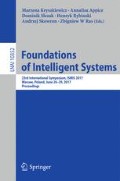Abstract
In the finance world, customer behavior prediction is an important concern that requires discovering hidden patterns in large amounts of registered customer transactions. The purpose of this paper is to utilize this customer transaction data for the sake of customer behavior prediction without any manual labeling of the data. To achieve this goal, elements of the banking transaction data are automatically represented in a high dimensional embedding space as continuous vectors. In this new space, the distances between the vector positions are smaller for the elements with similar financial meaning. Likewise, the distances between the unrelated elements are larger, which is very useful in automatically capturing the relationships between the financial transaction elements without any manual intervention.
Although similar embedding space work has been used in the other fields such as natural language processing, our work introduces novel ideas in the application of continuous word representations technology for the financial sector. Overall, we find the initial results very encouraging and, as the future work, we plan to apply the introduced ideas for the abnormal financial customer behavior detection, fraud detection, new banking product design, and making relevant product offers to the bank customers.
Access this chapter
Tax calculation will be finalised at checkout
Purchases are for personal use only
Notes
- 1.
All feature names are translated from Turkish to English.
References
Ando, Y., Hidehito, G., Hidehiko, T.: Detecting Fraudulent Behavior Using Recurrent Neural Networks (2016)
Bengio, Y., Ducharme, R., Vincent, P., Jauvin, C.: A neural probabilistic language model. J. Mach. Learn. Res. 3, 1137–1155 (2003)
Busta, B., Weinberg, R.: Using Benford’s law and neural networks as a review procedure. Manag. Audit. J. 13(6), 356–366 (1998)
Kirkos, E., Spathis, C., Manolopoulos, Y.: Data mining techniques for the detection of fraudulent financial statement. Expert Syst. Appl. 32, 995–1003 (2007)
Mikolov, T., Sutskever, I., Chen, K., Corrado, G.S., Dean, J.: Distributed representations of words and phrases and their compositionality. In: Advances in Neural Information Processing Systems, pp. 3111–3119 (2013)
Mikolov, T., Zweig, G.: Context dependent recurrent neural network language model. SLT 12, 234–239 (2012). doi:10.1109/slt.2012.6424228
Mikolov, T., Karafiát, M., Burget, L., Cernocký, J., Khudanpur, S.: Recurrent neural network based language model. In: Interspeech, vol. 2, p. 3 (2010)
Sohl, J.E., Venkatachalam, A.R.: A neural network approach to forecasting model selection. Inf. Manag. 29(6), 297–303 (1995)
Wiese, B.J.: Credit card transactions, fraud detection, and machine learning: modelling time with LSTM recurrent neural networks. Dissertation, Department of Computer Science, University of the Western Cape (2007). doi:10.1007/978-3-642-04003-0_10
Zou, W.Y., Socher, R., Cer, D.M., Manning, C.D.: Bilingual word embeddings for phrase-based machine translation. In: EMNLP, pp. 1393–1398 (2013)
Acknowledgments
We would like to thank Tuğba Halıcı and Sait Şimşek for their valuable technical contribution to this work.
Author information
Authors and Affiliations
Corresponding author
Editor information
Editors and Affiliations
Rights and permissions
Copyright information
© 2017 Springer International Publishing AG
About this paper
Cite this paper
Dayioglugil, A.B., Akgul, Y.S. (2017). Continuous Embedding Spaces for Bank Transaction Data. In: Kryszkiewicz, M., Appice, A., Ślęzak, D., Rybinski, H., Skowron, A., Raś, Z. (eds) Foundations of Intelligent Systems. ISMIS 2017. Lecture Notes in Computer Science(), vol 10352. Springer, Cham. https://doi.org/10.1007/978-3-319-60438-1_13
Download citation
DOI: https://doi.org/10.1007/978-3-319-60438-1_13
Published:
Publisher Name: Springer, Cham
Print ISBN: 978-3-319-60437-4
Online ISBN: 978-3-319-60438-1
eBook Packages: Computer ScienceComputer Science (R0)

